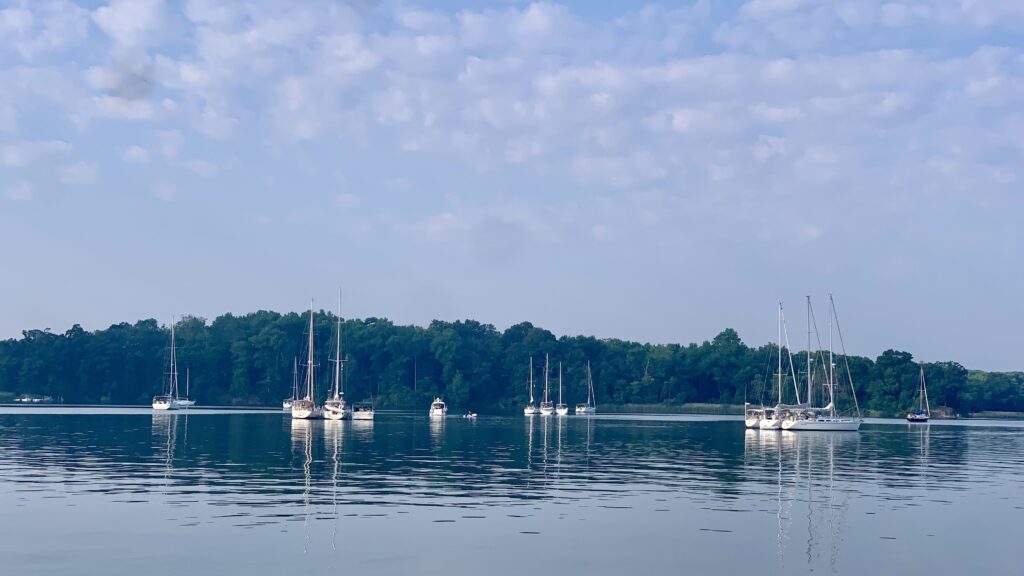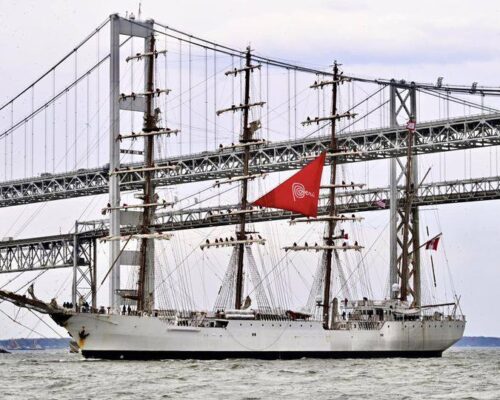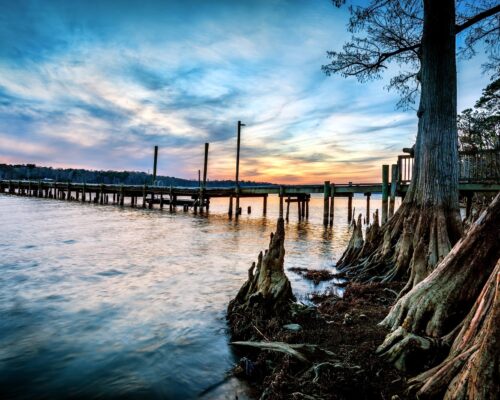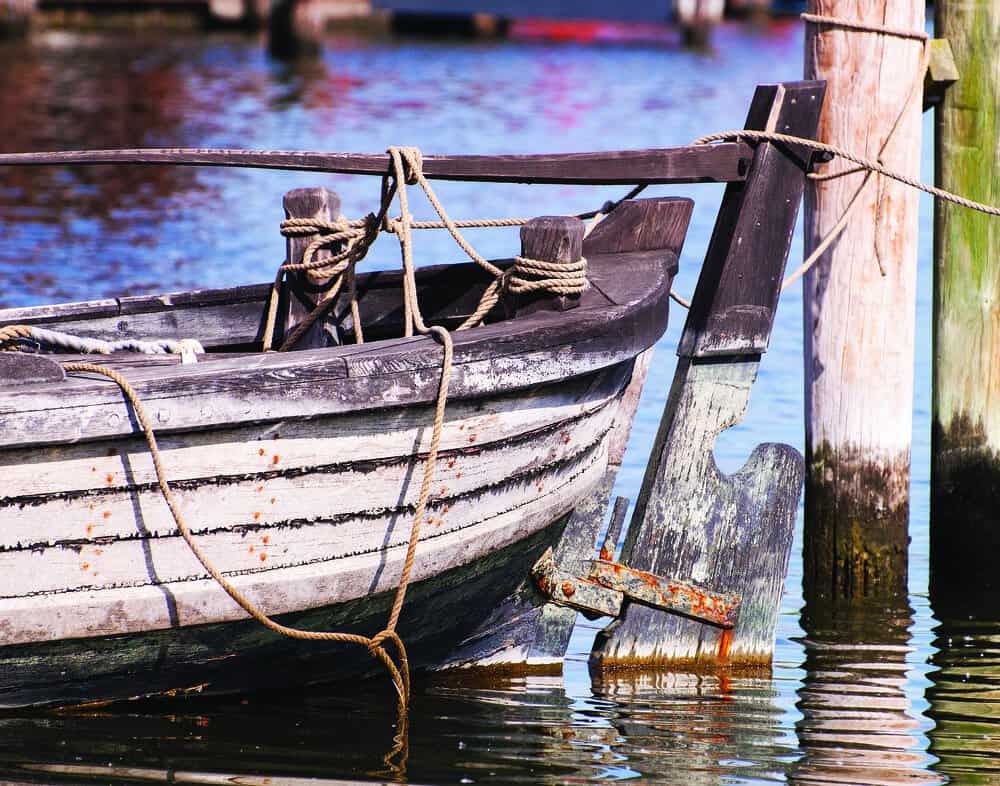When you live in the Middle Bay region of the Chesapeake, you become very familiar with the popular anchorage spots of St. Michaels and Annapolis. But there are spots on the Bay that offer a different type of adventure—greater peace and quiet, more nature, and less people-y.
From our home creek off the South River, we can be anchored on the Rhode River within 90 minutes. This doesn’t necessarily mean we do it regularly, though. It’s tough to break away from kids’ soccer games, neighborhood happy hours, and general “weekend fun” calendar items, and convincing the entire family to leave their tablets at home for 24 hours can be more of a challenge than I sometimes want to take on.
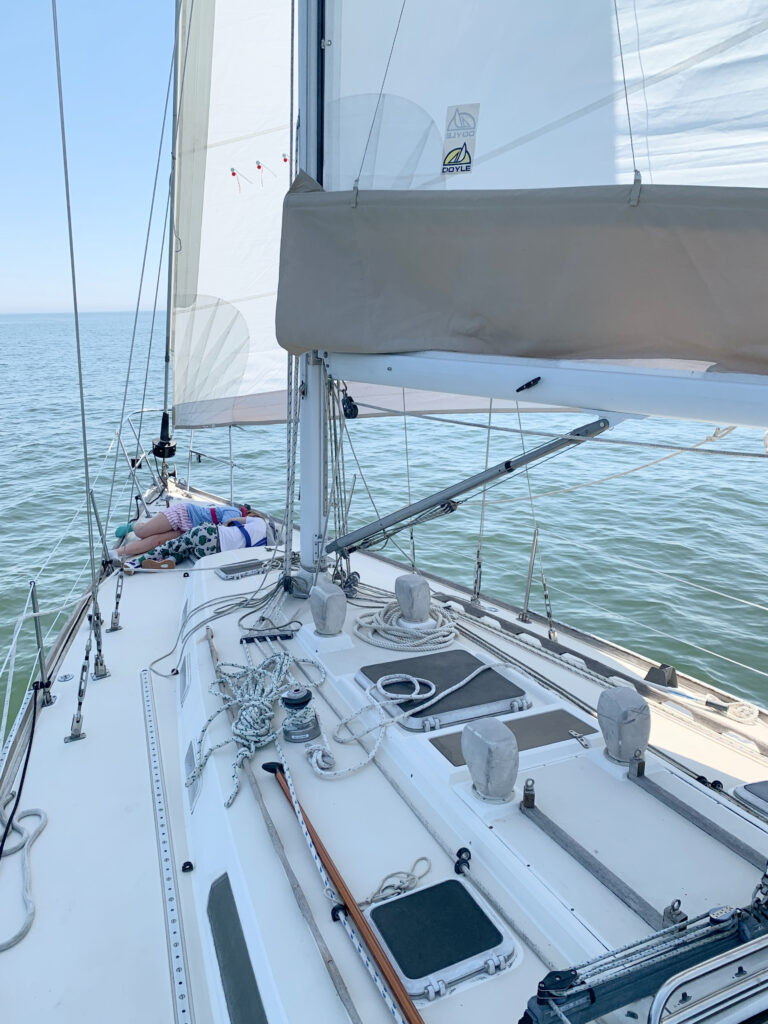
But then, that precious moment hits when we shove off the dock and the boat begins its slow crawl into the river. I raise a hand to fishermen returning home, ice melting in their sterns, while the kids begin watching the horizon for dolphin fins. The Bay breeze hits as we round the Mayo peninsula and instantaneously all thoughts of the house, sports schedules, and work disappear. From the cockpit, I hear the crack of a cold beverage opening and remember that magazine I tucked into my bag at the last second.
It’s a reset button for the soul.
The Rhode River is special for many reasons, least of all its accessibility to Annapolis. From Thomas Point, it’s a short sail south and around the beaches of Beverly Triton Park (popular with windsurfers) and up the river to the quiet anchorage on the southwestern arm. There’s a beautiful spot to drop the hook off the shores of Camp Letts, with the grassy marshes of the Smithsonian Educational Research Center (SERC) extending off to the south. A cluster of small islands (one is no more than a sand bar) provide a nice respite for migrating birds and children wanting to get off the boat and play pirates.
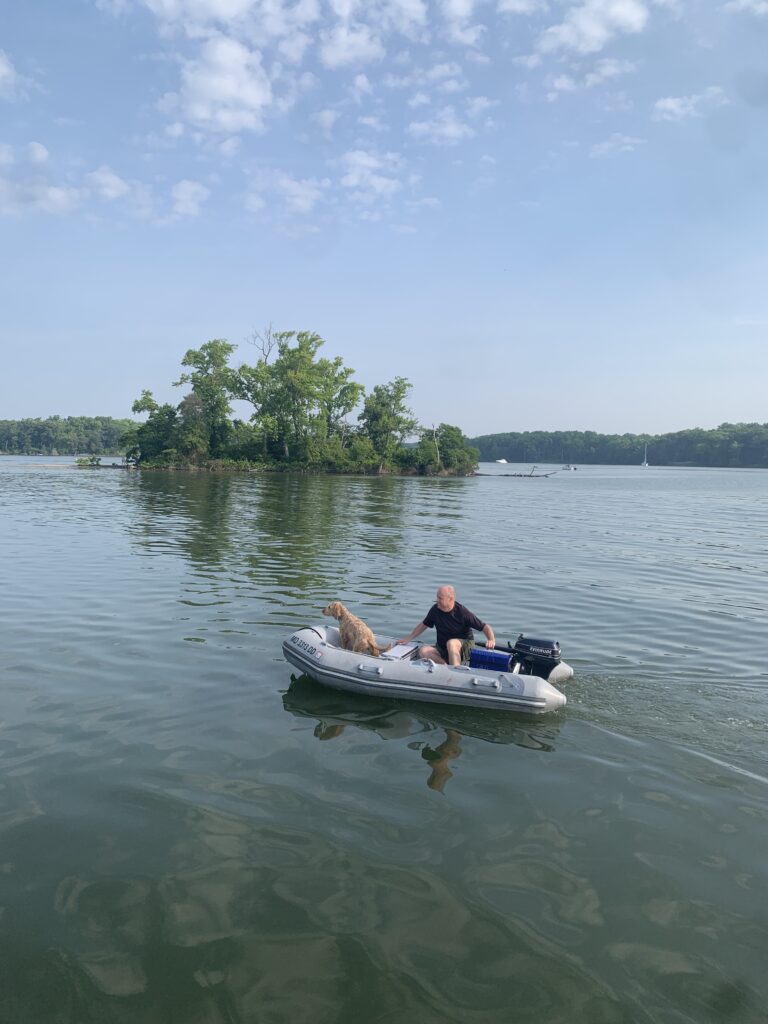
The anchorage is never empty, but folks seem to support the laid-back environment. It’s well protected, which means you might have some parties and water skiiers during the day. Partly due to its shallows and partly because the land is preserved by SERC, folks seem to recognize the anchorage as a good spot for some R&R.
This special, peaceful quality of the Rhode is somewhat by design. The land dates back to the Piscataway, who hunted seasonally until the 1600s when a group of colonists developed a farm on the water’s edge. The farm was prosperous, and a deepwater wharf was erected, sending corn, tobacco, and wheat up and down the Bay. After 300 years, the farm was parceled off and a significant section left to the Smithsonian Institute, who established their Research Center in the 1960s. Today, SERC commands a 2,650-acre parcel of land, and without mega mansions and dock bars crowding the shoreline, boaters can find some quiet outside the bustle of Annapolis.
Our Sabre 42 finds its preferred corner of the anchorage, and my husband gives us the “all clear” from the bow as the anchor holds. There’s a splash off the starboard rail before I’ve killed the engine: Cam’s in the water, and his sister, Tansley, is lowering down a kayak to him. They’re off to explore the waters around Flat Island, a islet with some scraggly trees and lots of birds. The islet is rapidly eroding, and going on land or beaching boats in the shallows surrounding it is discouraged to protect the birds’ sanctuary. I threaten the kids with no dessert if they go ashore.
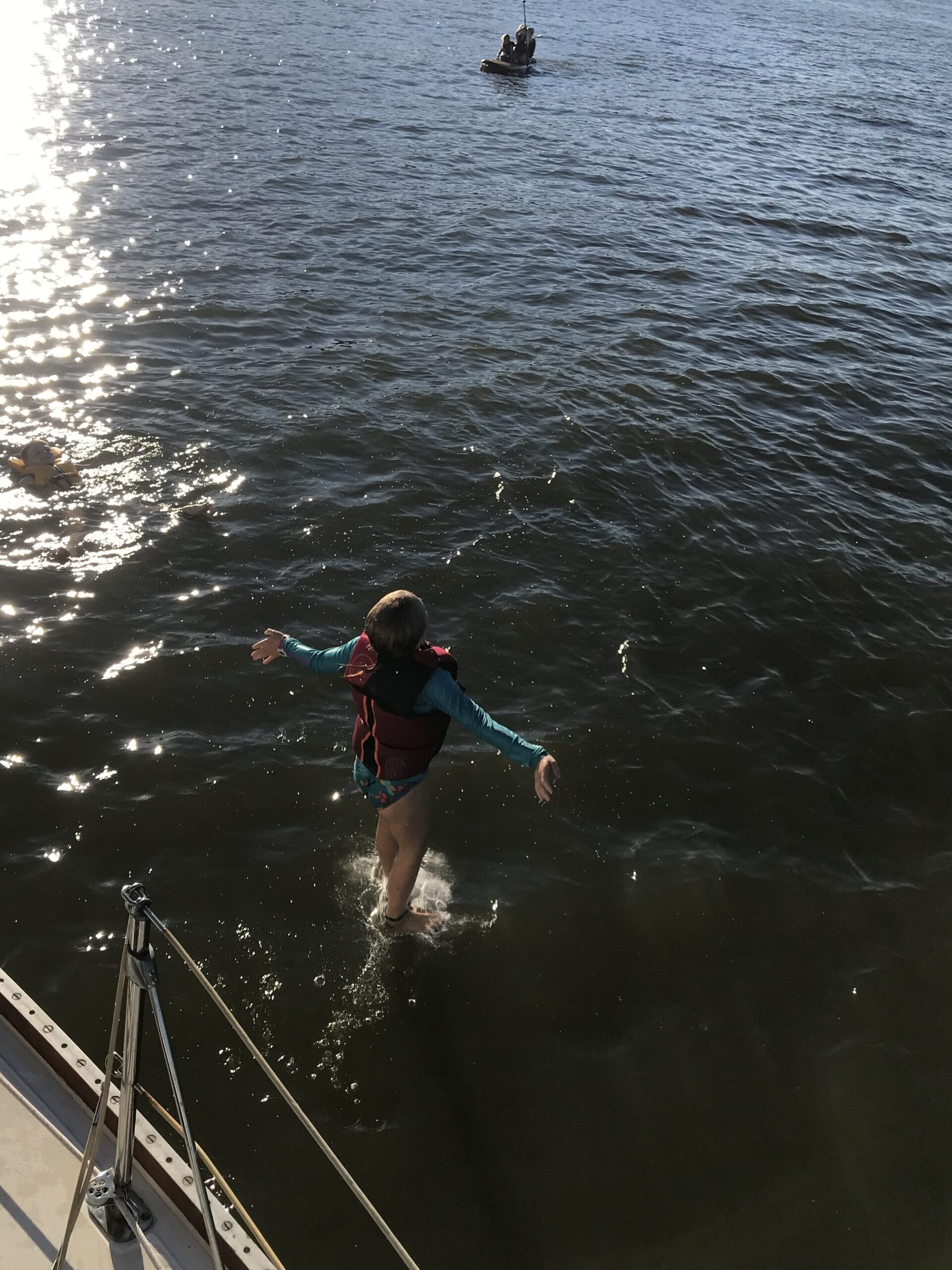
The boat isn’t quiet once the kids get back, hungry and full of pirate mannerisms. Even the cat’s circling my ankles, threatening the plank if I don’t feed him. We grill our hamburgers off the stern and when another boat sees the smoke, they send over a dinghy envoy for some of our ketchup. After dinner, we warm up the cabin baking cookies, and the kids watch a movie off the projector while my husband and I prove those college astronomy credits were a waste of money. We all fall asleep early, but no one has any idea what time it is.
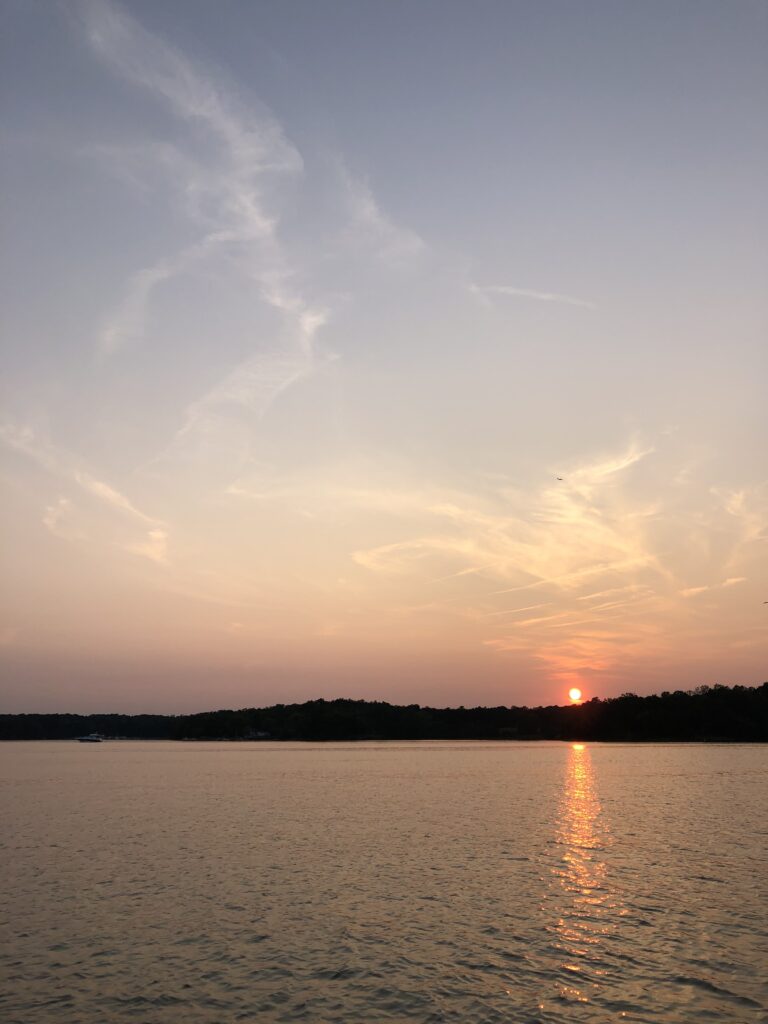
Mornings on the Rhode are especially quiet, and one of my favorite things to do is swim a circumambulation of the SERC island before it gets too busy. While my husband is cooking his signature boat breakfast of corned beef hash and runny eggs, I get in the water for some exercise. The water behind the island is too shallow for boat traffic, so it’s just me and a few dynamic grandpa-grandchild duos who are out crabbing while their parents sleep in. There’s so little water that I can stand in many areas, but mainly I just float and look up at the blue sky.
I get back to the boat as dishes are being washed and the kids are ready for their next adventure: kayaks and paddleboards are back in the water and we’re off to explore SERC’s campus on Fox Creek. Tucked behind the largest island, a massive tree drops heavy branches that hide a tiny strip of beach that leads to a series of trails through the wetlands. Shoes go on for the first time and we find our way around Hog Island, misidentifying flora and fauna along the way. Afterward, the kids jump back on kayaks and disappear into the reeds, exploring the labyrinthine water trails, while my husband and I paddle back to the boat.
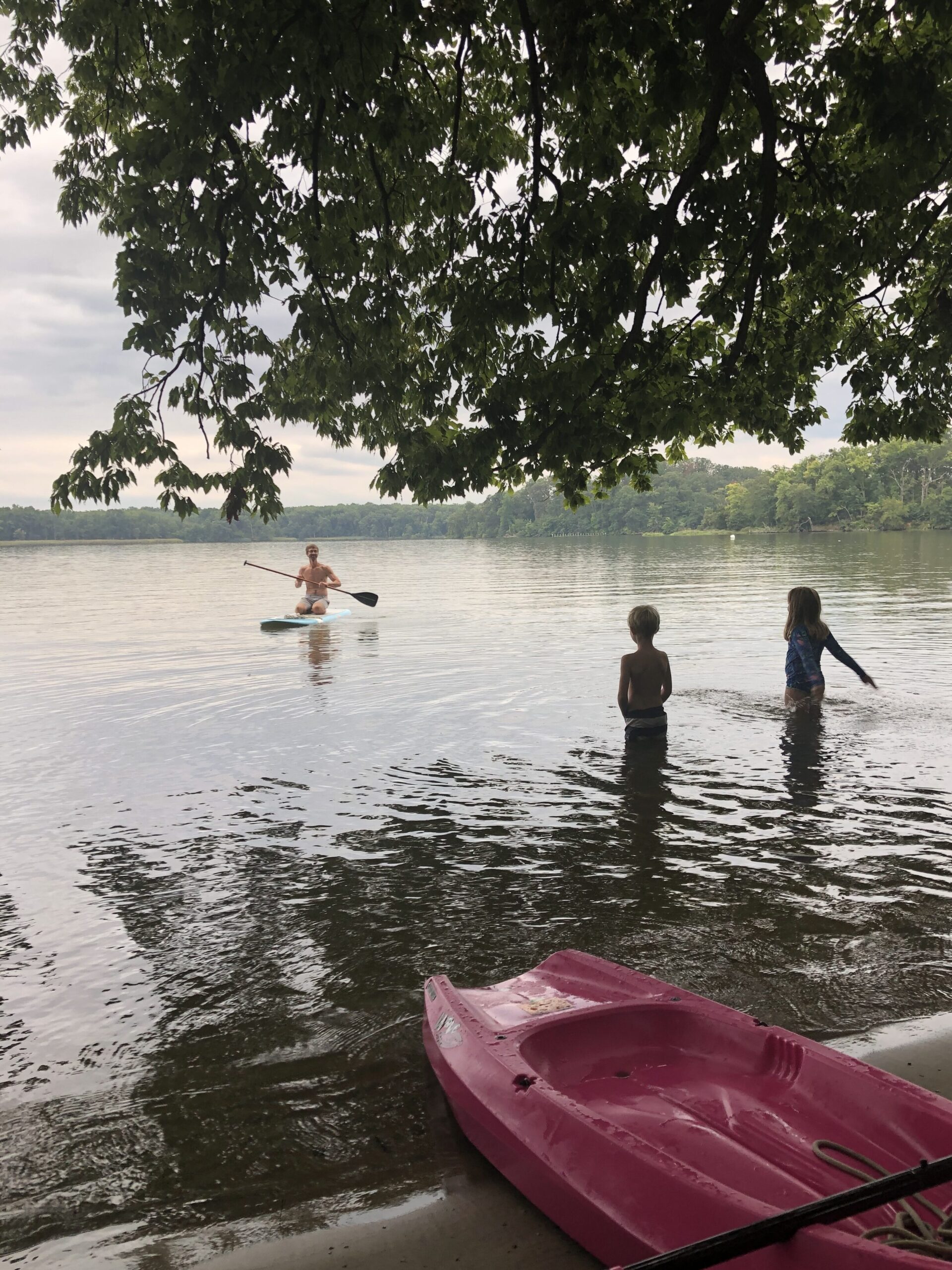
We’re out of propane (and ketchup), so lunch is an elaborate charcuterie board eaten in the cockpit. Afterward, we stow our gear and get ready for some sailing on our way home. The anchor gets pulled and the sails get raised and we leave this beautiful place as quietly as we can.
Annapolitan Duffy Perkins is Chesapeake Bay Magazine’s new Living Editor.

